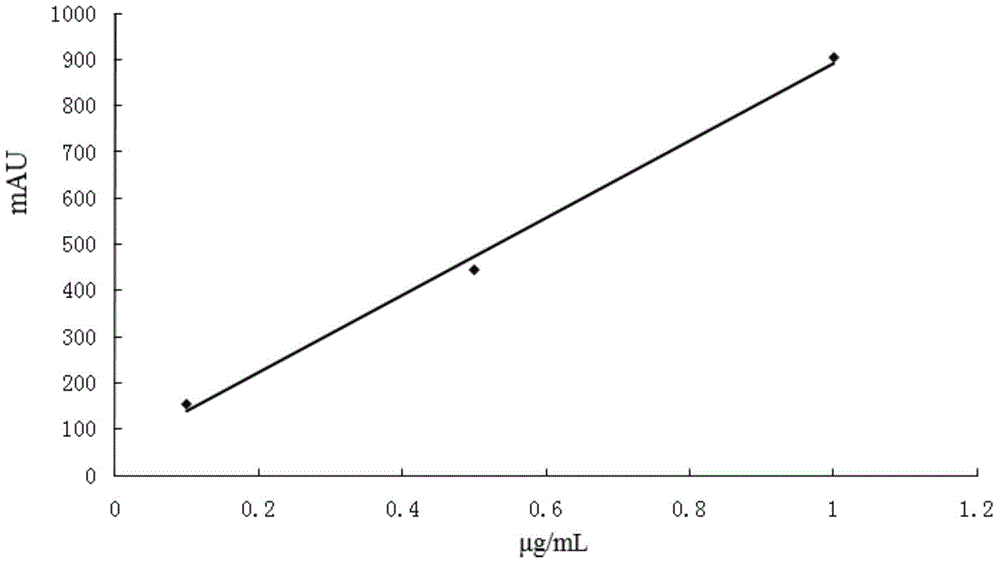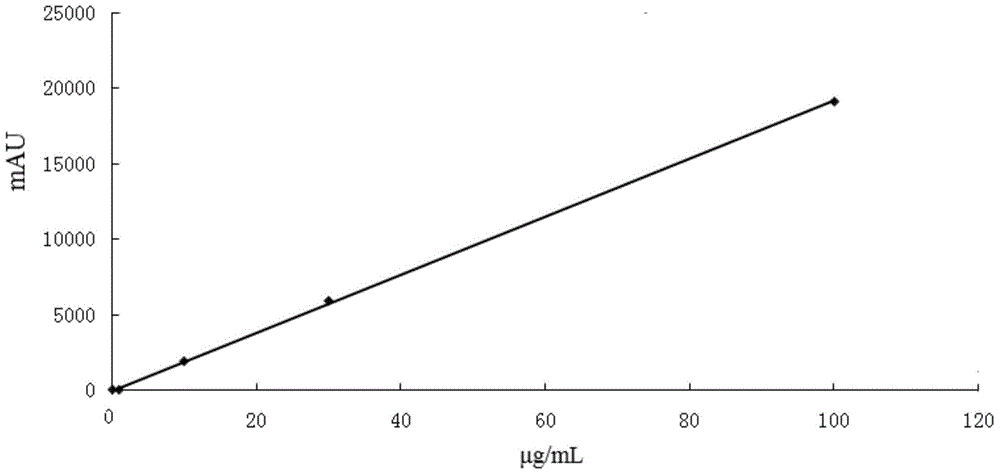Method for Determination of Tatb Synthesis Intermediates and Products in Wastewater by Liquid Chromatography
A liquid chromatography and intermediate technology, applied in the field of chemical analysis, can solve problems such as unfavorable simultaneous analysis of multi-component intermediates, large differences in physical and chemical properties, and difficulty in mastering the technology.
- Summary
- Abstract
- Description
- Claims
- Application Information
AI Technical Summary
Problems solved by technology
Method used
Image
Examples
Embodiment 1
[0057] Using phloroglucinol as a raw material, the chemical reaction equation for producing chlorine-free TATB through nitration, alkylation and amination, the structural formulas of intermediate related substances and products are as follows:
[0058] The first step, nitrification:
[0059]
[0060] Nitrate 1kg of phloroglucinol with 10L of sulfuric acid, and 2.4L of mixed acid of sulfuric acid and nitric acid (among them, 1L of sulfuric acid and 1.4L of nitric acid) to obtain the nitrated product 2,4,6-trinitro-1,3, 5-pyrogallol (TNPG), the yield is 98%; the nitrification product is washed twice with 3mol / L nitric acid to obtain nitrification wastewater, the pH value of which is far less than 1;
[0061] The second step, alkylation:
[0062]
[0063] The nitration product TNPG2kg that step one makes is mixed with trimethyl orthoformate (HC (OMe) 3 ) 10L for alkylation reaction to obtain the alkylation product TETNB with a yield of 85%; washing the alkylation product ...
PUM
| Property | Measurement | Unit |
|---|---|---|
| pore size | aaaaa | aaaaa |
Abstract
Description
Claims
Application Information
 Login to View More
Login to View More - R&D
- Intellectual Property
- Life Sciences
- Materials
- Tech Scout
- Unparalleled Data Quality
- Higher Quality Content
- 60% Fewer Hallucinations
Browse by: Latest US Patents, China's latest patents, Technical Efficacy Thesaurus, Application Domain, Technology Topic, Popular Technical Reports.
© 2025 PatSnap. All rights reserved.Legal|Privacy policy|Modern Slavery Act Transparency Statement|Sitemap|About US| Contact US: help@patsnap.com



